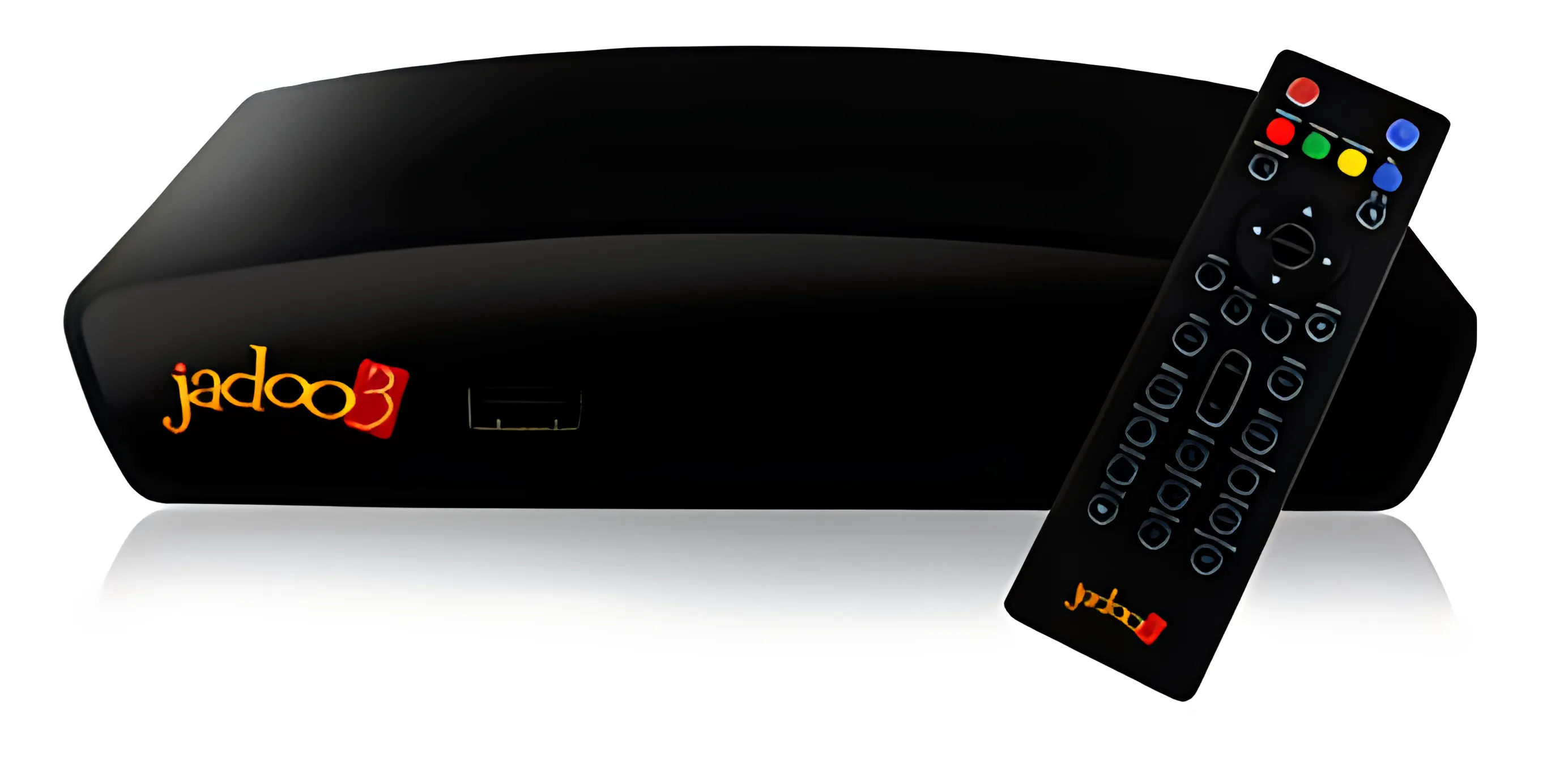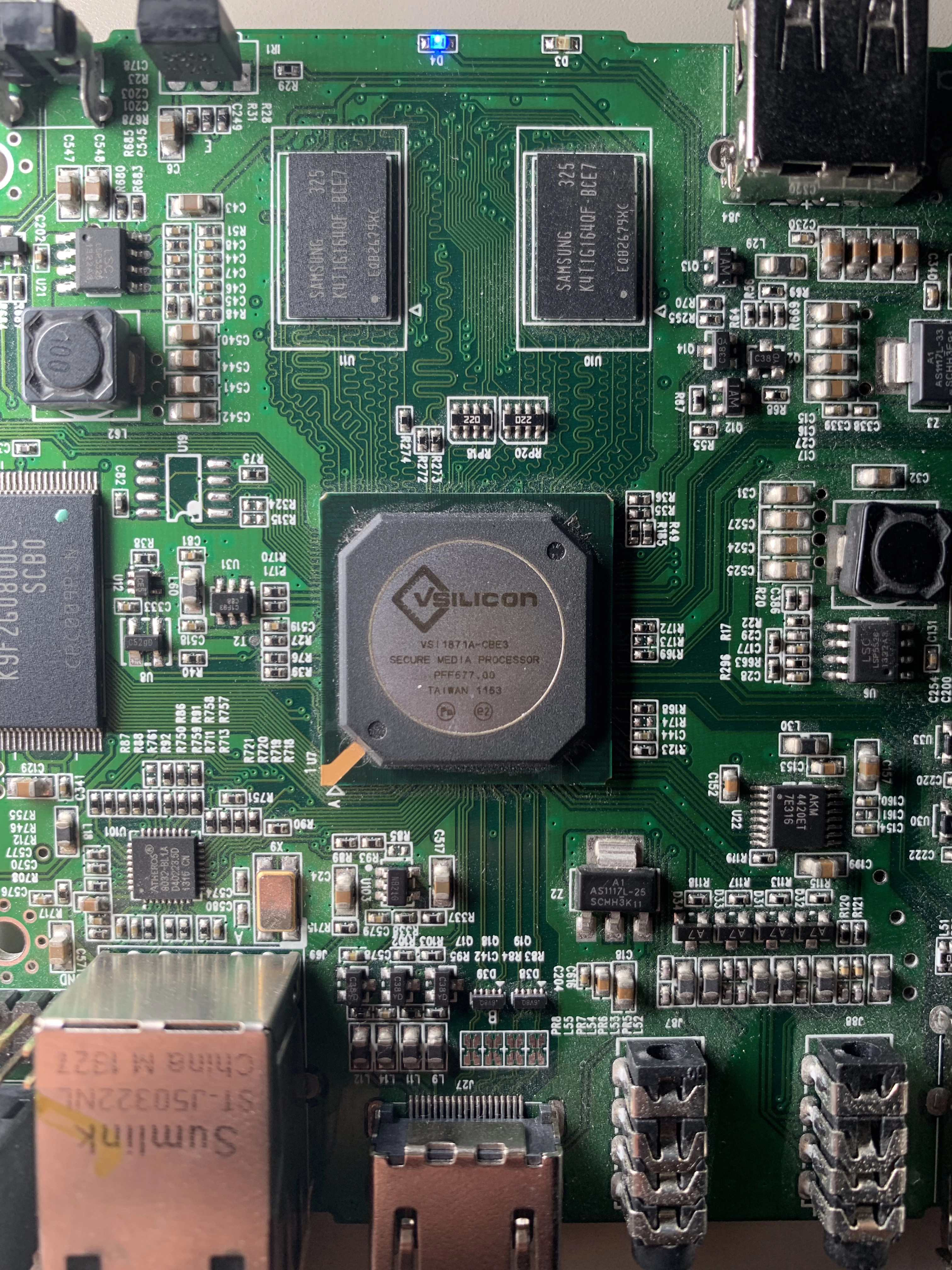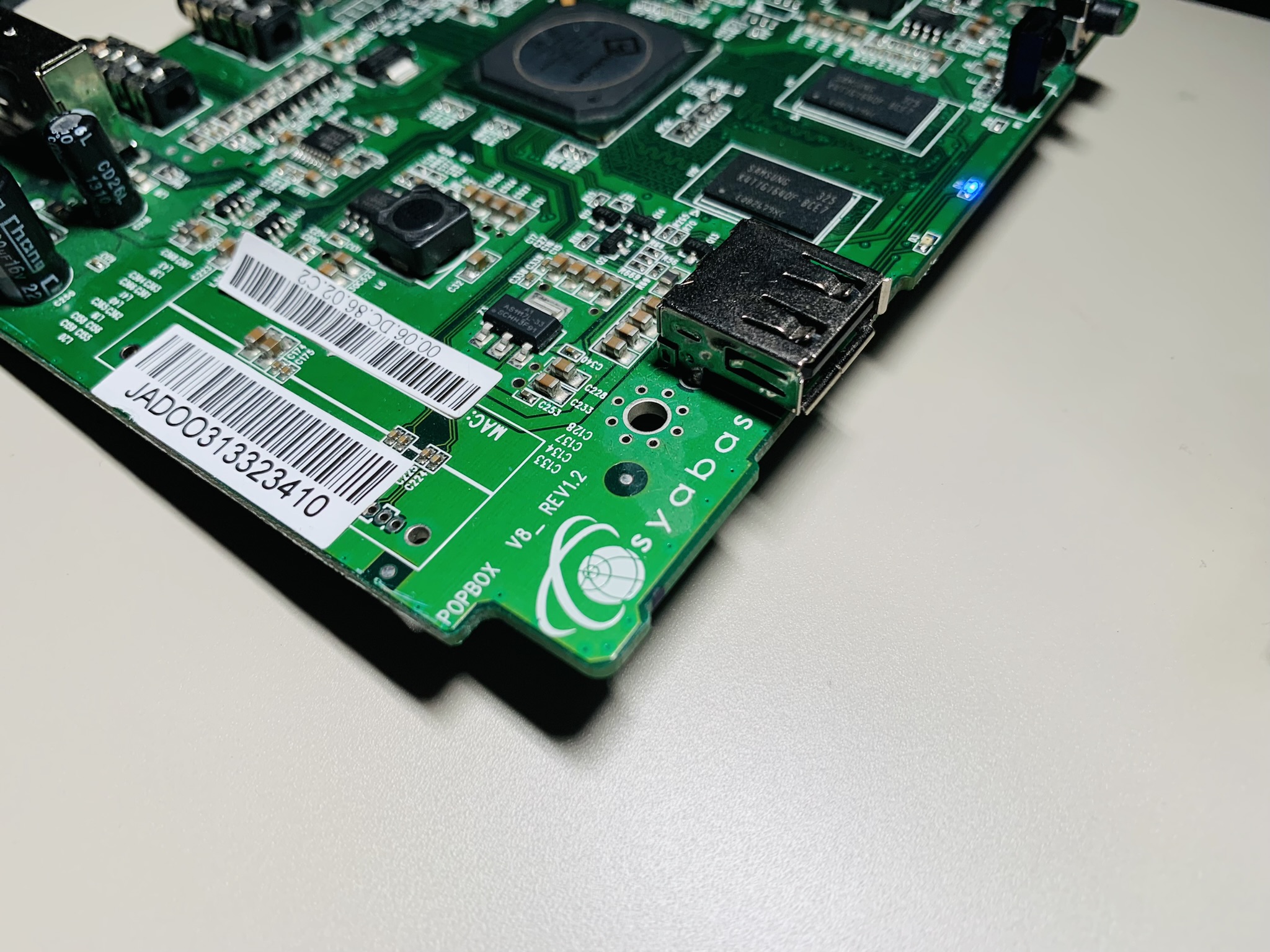How I hacked an obscure set-top box from 2013

Hello, friends! Today, I’d like to go over how I got root shell access to the Jadoo3, an obscure set-top box from 2013.
What is the Jadoo3?
As you can extrapolate from the name, the Jadoo3 is the third set-top box by JadooTV. The device aims to provide on-demand content from South Asia and the Middle East, with the name originating from the Hindi word for “magic”.
I’ve had the device for a while, but haven’t found anything to do with it until now. As such, it’s been collecting dust in a half-disassembled state for some time.
Internals
Opening up the device, we can see the heart of the machine.

In the center, we can see some sort of SoC, with a model number of VSI1871A-CBE3. Searching for this online returns very few results, with no datasheet available.
NOTE: Just off screen to the bottom left of the image, there seems to be a 10-pin header, which could be a debugging interface such as JTAG. However, this was not needed, as will be discussed later in the article.
However, in the front-left corner of the PCB, we can see some identifying information. The device seems to be based on the Syabas Popbox V8, another set-top box which is powered by the SMP8670, a MIPS CPU created by Sigma Designs.
Getting in
Booting the device up and getting it connected to a network, we can run nmap to reveal an open telnet service on port 23. This can’t be good.

That’s right, a root shell was exposed on an open, unauthenticated channel. From there, it was as simple as connecting with nc <ip> 23.
What’s very interesting is that the box seems to run on a flavor of Linux. Running uname -a gives us the following output:
Linux JADOO 2.6.29.6-22-sigma #263 PREEMPT Thu Feb 12 17:19:10 MYT 2015 mips GNU/Linux
This seems to confirm this is a MIPS processor by Sigma Designs, as discussed earlier. The contents of /proc/cpuinfo gives us more insight:
system type : Sigma Designs TangoX
processor : 0
cpu model : MIPS 24Kc V7.12 FPU V0.0
BogoMIPS : 466.94
wait instruction : yes
microsecond timers : yes
tlb_entries : 32
extra interrupt vector : yes
hardware watchpoint : yes, count: 4, address/irw mask: [0x0ffc, 0x0ffc, 0x0ffb, 0x0ffb]
ASEs implemented : mips16
shadow register sets : 1
core : 0
VCED exceptions : not available
VCEI exceptions : not available
SMP8XXX Chip ID : 8671
SMP8XXX Rev ID : 2
System bus frequency : 351000000 Hz
CPU frequency : 702000000 Hz
DSP frequency : 351000000 Hz
Specifically, it seems to be a revised version of the SMP8670, called the SMP8671.
Checking /proc/meminfo indicates the device comes with ~128MB of RAM.
What now?
The device’s interface is apparently Flash-based, so it might be possible to replace some of the included apps with arbitrary swf files. Additionally, the standard Linux framebuffer is exposed, which could open up the possibility of running non-flash programs (DOOM anyone?).
I will most likely make one or more follow-up posts if I manage to get my own programs running on the device.
For now, this has been BomberFish, and I do declare; end broadcast.
